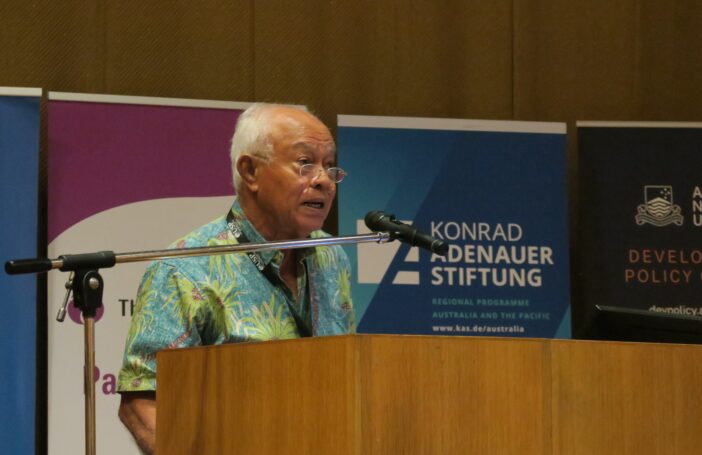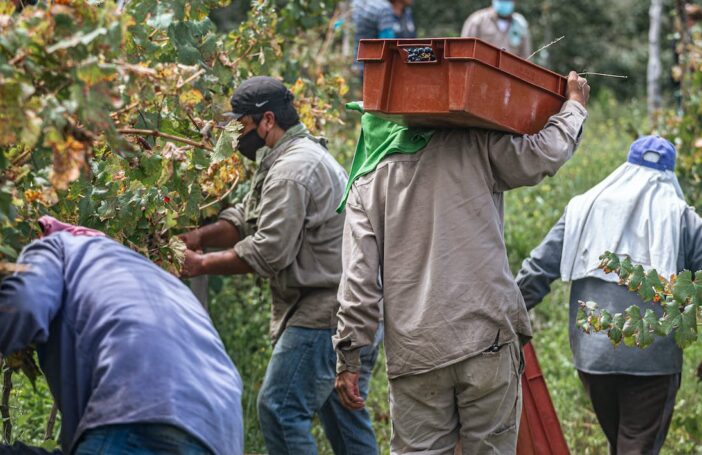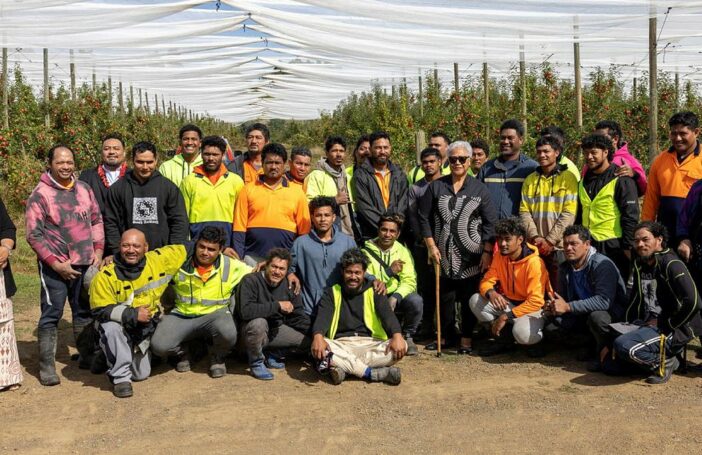This three-part blog is an edited version of the keynote address given by Professor Meleisea at the 2023 Pacific Update, on 15 June.
One of the major initiatives of the new government elected in Samoa in 2021 has been to fund district committees to prepare district development plans. This proposal existed previously, but was not funded. Now each district has been given one million tala to establish an office, appoint support staff, and begin the planning process. It is expected that this will lead to implementation of needs-based projects to benefit each village in a district, as well as shared district facilities and services.
With regard to equitable labour mobilisation, it is proposed that these district committees select the workers for each season, subject to the national and district quotas and the eligibility criteria. But it is uncertain how district committee selection will work if private recruiters meet the new licensing criteria.
For example, one recruiter, who has been highly praised by consultants evaluating labour mobility schemes, runs a non-profit trust which is funded by the workers it recruits. They pay for training and do voluntary work in the village and district as directed, and once they are mobilised, they pay five dollars a week to the trust in whatever currency they are being paid in. This income funds the salaries and operational costs of the trust, which has a single Samoan trustee, the businessman who operates it. What will happen if the government requires this recruiter to hand over the job to the district committee? That remains to be seen.
There are several other potential flaws in the government’s proposed policy changes, discussed below and in the previous blog. First, the district committees are an innovation, and are only slowly becoming effective. Most of them are chaired by the local member of parliament and comprise a representative nominated by each village council in the district. Many are taking time to perceive the advantages of having district planning in their own hands instead of the hands of public servants and aid donors. Furthermore, in electoral districts where the local member belongs to an opposition political party, there are perverse incentives to undermine the committees and make the government look bad when developments do not eventuate.
Another issue is the demographic quotas. According to the 2016 population census, 35% of youth (aged 18-35) reported domestic duties as their main activities, 53% of them female. In Samoa the largest proportion of labour, although not specifically enumerated, can be assumed to be employed in household-based informal businesses of farming, fishing, food vending, handicrafts and produce marketing. In the formal economy, according to 2016 census data, 41,142 people said they were employed. The remainder were self-employed or working for their family. In urban areas formal employment rates are only slightly lower than in rural areas in these age groups.
Labour mobility schemes are based on the assumption that the unemployed are mainly those with basic levels of education, however 2020 data from the Samoa Qualifications Authority suggests unemployment is also a problem for young people who have graduated with post-school qualifications, with only 52% of graduates finding employment within six months of their graduation. This suggests a mismatch between higher education and training outcomes and the local labour market. It may also reflect low pass rates in the penultimate school certificate examinations in English and maths.
Most Samoan children complete eight years of primary education, and a high proportion continue to Years 9-13. Post-school education and training institutions had 4,969 students enrolled of both sexes, but only 873 of them were enrolled in technical and vocational (TVET) courses. Of those 4,969 students, the largest number, almost a quarter (1,041), were enrolled in fields of study classified as “society and culture”.
While there may be proportionately more eligible unemployed young people in the rural districts, those people may lack cash income but they do have the means of a subsistence livelihood available to them by planting, fishing and small-scale trading. This is seldom the case for those who are unemployed in the urban districts. However, the urban districts have been given smaller quotas for worker selection, assuming there are more jobs available in urban areas.
Unemployment for these urban people can mean poverty that involves serious hardship, with no means of feeding and housing themselves adequately. These are the people whose children walk in the sun and rain to sell small cheap items such as cotton buds, cardboard air fresheners and hairpins, or homemade goods such as taro chips, lavalavas and fans. After dark, these children of the urban poor may be seen begging outside fast food outlets.
To conclude, I want to reflect on the political problems that the government will face if and when it puts some of these policies in place. At present, the cost of living in Samoa is extremely high and all except those on the highest pay scales are experiencing hardship. We are strongly impacted by inflation and supply chain disruption. Most of what we need day to day in Samoa is imported, and our few food crops are exported. Nearly everyone in the eligible age range would like to go and earn higher wages as seasonal workers.
Now, after 20 years of one-party rule, we have two strong mutually antagonistic parties, both of them highly populist in their approaches to politics. How are Samoans going to accept restrictions on labour mobility if they think this will affect their chances to work overseas?
I predict restrictions are likely to be deeply resented, which is why our government is between a rock and a hard place, and taking a long time to announce the proposed measures. For the same reasons, our government has been holding off on other necessary policy measures, such as just electoral laws, and repealing the laws passed by the previous government to establish two separate judicial systems. So whatever the pros and cons of the labour mobility schemes are, politics is going to be a serious consideration.
The other serious risk is that, by imposing more restrictive policies and asking the receiving countries to share the costs, Samoa will have a more reduced access to labour mobility than it wants. Receiving countries may simply look elsewhere where conditionalities remain weak. I assume, although I cannot confirm, that the reason Samoa’s policy has not been announced (at the time of writing – June 2023) is that our Prime Minister is seeking a consensus with other Pacific Island governments, to join with Samoa in taking a united regional approach to labour mobility to overcome the issues that I have touched on.
This is the third blog in a three-part series.
Professor Meleisea’s keynote address was based on a chapter by Malama Meleisea, Masami Tsujita and Michael Yemoh in a forthcoming book edited by Penelope Schoeffel, Malama Meleisea and Kalissa Alexeyeff, provisionally titled Labour mobility impacts on Samoa, past and present.






Malo le soifua maua male lagi e mama Melesisea Leasiolagi Malama, Fa’afetai lava for three excellent blogs drawn from your keynote presentation at the recent Pacific Update 2023 conference in Suva. Your insightful comments on the impact labour mobility schemes are having on Samoa’s families, communities, businesses and wider economy are greatly appreciated. Many of the concerns that Samoa’s current government have about temporary labour migration in Australia and New Zealand are surfacing in Tonga and Vanuatu as well — the other two countries that have been primary sources of temporary labour for primary sector industries and enterprises overseas. Your reflections on the challenges facing the operation of temporary labour migration schemes in Samoa will be very helpful for those currently involved in reviewing policies relating to labour supply in their own countries, as well as those in New Zealand and Australia who are reviewing policies relating to the operation of the RSE and PALM schemes. Fa’afetai lava.